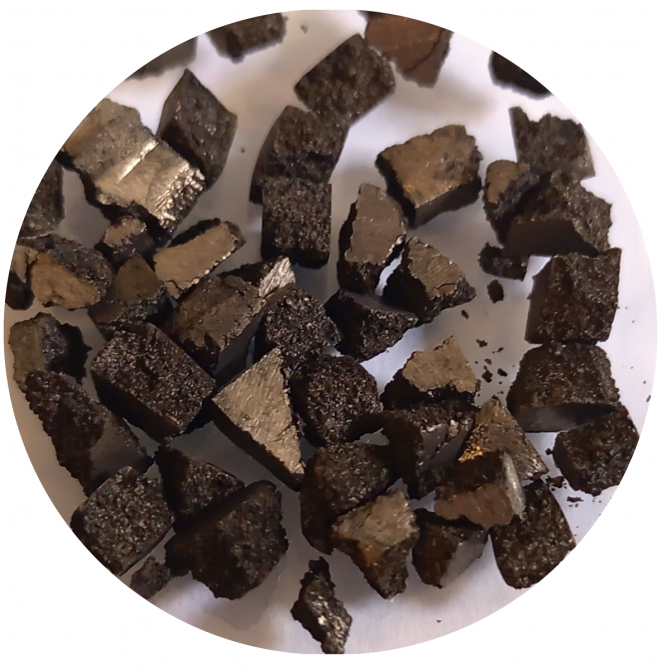| Małgorzata Kłoskowicz, PhD |
BioEkoDiox – that’s the acronym for the project implemented by scientists associated with the University of Silesia in Katowice; they develop new solutions for agro- and petrochemistry and in the area of plastic recycling. The solutions—one of which has been protected by patents—concern 1,3-dioxolanes, organic chemical compounds of wide application.
‘We started implementing the BioEkoDiox project in 2021, wanting to study several intriguing topics we knew had huge application potential. Thus, we want to achieve three main goals,’ says Maciej Kapkowski, PhD, Faculty of Science and Technology, the Head of the project.
The first one is to maintain the continuity of the 1,3-dioxolane derivatives synthesis based on the nanotechnological solutions. The work resulted in finding a more efficient and less energy-intensive method to synthesise these compounds thanks to the use of a photocatalyst based on ruthenium nanoparticles supported on an anatase form of titanium dioxide. It is this particular new method of catalyst synthesis that has been patent-protected.
The process was immensely significant to the scientists in terms of the second project goal out of three. The chemists had been researching new ways of applicability of the obtained synthesis products as: new fuel additives, new adjuvants for agriculture and aprotic polar solvents for polymers (polyurethanes, epoxides, polyesters).
‘Although the results have proven to have a neutral influence in terms of fuel additives, the results in terms of the second and third areas may make it possible to establish cooperation with the industry,’ says the co-author of the solutions.
The new substances for agricultural chemistry produced based on the 1,3-dioxolanes (adjuvants) exhibit very good properties, thanks to which it might be possible to reduce the need to use plant protection products while maintaining their efficacy. Lower amounts of such chemicals are beneficial for the environment, farmers, and consumers as they mean lower chemicalisation of agriculture and better soil protection.
‘We’ve already completed the stage of laboratory tests in greenhouses. We also have the first positive results regarding the effects of applying adjuvants on farmlands. We still have to carry out research in terms of certification, but there are many indications the solution we developed is effective and may be introduced to the market in the future,’ adds the scientist.
Other satisfying results concerned the efforts on solvents for widely used polymers present in many items of daily use made of plastics.
The third goal of the project was to develop zero waste technology for the conversion of poly(ethylene terephthalate) (PET) to mainly ethylene glycol and terephthalic acid. The obtained compounds may be applied as an additional source for adjuvant production or recycling terephthalic acid and reused in PET production.
Moreover, a dedicated device has been constructed for the purpose of the research. Its heart is a catalyst designed by Maciej Kapkowski, PhD. Although the device is a pilot plant used to produce dioxolanes, ‘we will most certainly apply for patent protection for this invention as well. We work in a way so that every publication of results is linked to a patent application submitted beforehand,’ says the USil scientist. ‘Last but not least, I would like to appreciate Michał Fafiński, our innovation broker, who helps us in preparing business proposals and establishing cooperation with companies interested in implementing our inventions,’ he adds.
The project entitled ‘Methodology of continued synthesis of 1,3-dioxolanes along with the extension of the scope of applicability target products in the chemical industry’ is implemented by: Maciej Kapkowski, PhD (head); Sonia Kotowicz, PhD Eng.; Mateusz Korzec, PhD Eng.; Karina Kocot, PhD; Michał Ludynia, PhD; and Michał Fafiński, MSc. The research was financed by the National Centre for Research and Development within the LIDER XI call for proposals. The authors of the patented method for cyclic ketals synthesis are: Maciej Kapkowski, PhD; Adrianna Chojnowska, MSc; Daniel Lach, MSc; Tomasz Siudyga, PhD, DSc; and Karina Kocot, PhD.
The article Less Chemicals in Farming was published in the June issue of University of Silesia Magazine No. 9 (319).

One patent application concerns a nano metallic catalyst in the form of granulate used for the synthesis of 1,3-dioxolane derivatives | Photo: private gallery





